-
Segway was supposed to change the world. Two decades later, it just might
Updated 1:04 PM ET, Tue October 30, 2018Bedford, New HampshireRoger Brown still remembers the shocked looks people gave him the first time he rode a Segway through the halls of the company's New Hampshire headquarters.It was early 2013, a rough time for the startup and its aspirations of changing how the world gets around. Brown had bought the company for just $9 million a few weeks before and flown in from his home in Tennessee to begin turning things around. What better way to get a sense of the place than to zip about on its signature product?As Brown cruised the halls on the self-balancing two-wheeled scooter, an employee pulled him aside to lecture him on the risks of riding without a helmet. Brown was dumbfounded. "I own the company," he told the employee. "I can do it." With that, he whizzed away.A few hours later, he received an email outlining the company's safety policies, which included mandatory helmet use. Either Brown would change his ways, or he'd be written up.All these years later, he still finds it more than a bit silly. "You would've thought I went to the Baptist convention and walked around with a pro-abortion sign," he said recently.The fuss over a helmet was the least of Brown's problems. He was the third person to own Segway, which had grabbed headlines in 2001 with the Segway PT and a promise to supplant the automobile and reinvent transportation. Instead, the company's flagship product became a punchline and the company a mess. In the years before Brown bought Segway, a half-dozen CEOs had come and gone, many of its best engineers had defected, and the VCs who had once showered Segway in cash had moved on to the next big thing.Brown bought the company from the estate of Jimi Heselden, a British entrepreneur who died after riding his Segway off a cliff. Segway was barely getting by on the meager revenue it brought in selling the PT to tour companies, security companies and police departments. But Brown saw a global brand with a powerful distribution channel. Six million tourists rode Segways on tours of cities like San Francisco and Washington, DC each year. He planned to buy other transportation companies focused on short trips, like e-bike startups. All he had to do to make Segway profitable, he figured, was run the place well.Brown brought on new employees to change Segway's uptight culture. He led an effort to trim costs by reengineering a circuit board, ditching the PT's expensive gyroscope in favor of a cheaper solution, and negotiating a better battery contract. It worked. Segway turned a profit within a year of Brown's arrival. He sold the company to the Chinese firm Ninebot on April 1, 2015 for more than $75 million.For a time, he was happy. Then one day in August of this year, he got lunch at the Boathouse, a barbecue joint in Cincinnati. As he ate wings and pulled pork sliders, Brown noticed people riding scooters along the riverwalk outside, and not just any scooters: Segway scooters.Ninebot introduced the Segway scooters shortly after Brown cashed out, triggering the scooter-sharing craze that has swept the world in the last year. You can find Ninebot's scooters in more than 100 cities, from the Americas to Asia, Europe and Australia. Ninebot can barely keep up. The company, which has more than 1,000 employees, will ship more than one million scooters this year — 10 times the number of PTs Segway sold in its first 17 years.Silicon Valley-backed Bird and Lime, both of which launched in 2017, lead the trend. They're growing faster than the ridesharing leaders, Uber and Lyft, did in their early days. Uber and Lyft have responded by launching their own scooter services this fall. So has Ford. All rely on Ninebot scooters."If I would've had the vision of Bird or Lime," Brown said, "Segway would have been worth $10 billion."When Brown owned the company, he focused on the Segway PT, which cost thousands of dollars. It had always been too expensive and ahead of its time.Now, though, the urban transportation revolution that Segway founder Dean Kamen and his truly gifted engineers dreamed of is unfolding, even if they aren't a part of it. Many are thrilled."We knew this was the way future transportation products would work," said former Segway lead engineer Doug Field, who has since worked at Apple and Tesla. "Anyone standing on something that's powered by electricity and a computer is a Segway descendant."The next big thing
Kamen is a colorful character, even among techies. He dropped out of college. He flies about in his own helicopter. He owns an island off the coast of Connecticut, and has joked about founding his own nation.He's also one hell of an inventor. Kamen made his name developing medical devices, such as a portable insulin pump and heart stents. In the 1990s he built a self-balancing wheelchair so the disabled could be at eye level with anyone.Even as he worked on medical devices, Kamen pondered the future of urban transportation. He didn't see a place for automobiles in that future, and liked to say you don't need a 4,000-pound vehicle to move a 150-pound person one mile. After finishing the wheelchair, developing an entirely new mode of transportation was the obvious next step.Kamen met Field in the mid-1990s when Field was working at Johnson & Johnson, one of Kamen's business partners. Kamen found himself struck by Field's intelligence.Field, for his part, seemed destined to revolutionize transport. His mother wrote in his baby book that her son would one day work on stuff with wheels. Kamen's vision of moving people about on small, electric machines enticed Field, who had started his career developing vehicles at Ford. He found the challenge of developing self-balancing technology irresistible.At Segway, Field earned a reputation as a brilliant engineer and calm leader who listened to everyone, didn't micromanage, and was beloved by all. "You got the impression he was searching for perfection among leadership, team-building," said Jason Sachs, an early Segway employee. "His character and manner made people trust him."The world got its first glimpse of the Segway PT — Personal Transporter — on Good Morning America on December 3, 2001. It was, in a word, a sensation. Few products have enjoyed such hype. John Doerr, an early investor in Google and Amazon, predicted it would be bigger than the internet and that it would achieve $1 billion in revenue faster than any product in history.Hype aside, the PT was an impressive gadget. Gyroscopes allowed it to balance perfectly on two wheels. Instead of using handlebars or a steering wheel, riders shifted their weight to turn. It marked the first consumer application of drive-by-wire technology, in which software, not mechanical linkages, makes a machine turn, accelerate, and stop. Riders zipped along at up to 12.5 mph for as much as 12 miles on a single charge.The PT was truly innovative, even revolutionary. Kamen, who had spent parts of about six years developing the PT, spoke seriously of rendering cars obsolete. His employees talked about working with urban planners in China to design new cities around their two-wheeled transport."There was a lot of reference to drinking the Kool-Aid," said early Segway employee Matt Gelbwaks. "We're here to change the world. It's bigger than us. It's bigger than us individually, it's even bigger than us collectively."Things didn't quite work out that way. Although brilliantly designed and meticulously built, two significant drawbacks hobbled the PT: It cost $4,950 and it was hard to look like anything other than a nerd riding one. It became a punchline, and then a trope, as a prop in television shows like "Arrested Development" and movies like "Mall Cop." It didn't help that guys like Apple co-founder Steve Wozniak took to playing polo with them and that President George W. Bush fell off of one in 2003.That same year, Gelbwaks launched an experiment in Celebration, Florida, to see how people used the scooters. The company sold them at a deep discount to roughly 100 residents. Within a year nearly all of the participants had stopped riding their Segways. Why?"There was a significant dork factor," Gelbwaks says. "It was never truly socially accepted."Cash crunch
The experiment in Florida highlighted another problem: Segway developed and tested the PT under the greatest secrecy. The company worried a competitor might beat it to market, and suspected Japanese automakers were working on a similar device. Employees kept the shades drawn. In some cases, they sealed the blinds with tape, lest someone try to peek through the narrow gap between the blind and window frame. They hid the scooters in plywood crates before transporting them.But working this way kept Segway from figuring out what people might want or need in a scooter."How do you do product testing if you can't go outside?" said Jonathan Pompa, an early Segway engineer. "It worked really well at driving around an engineering office, because that's what we were doing with it, instead of driving around in a city."Kamen's singular focus on the PT created another problem: Although Segway built prototypes of electric bikes, four-wheelers, skateboards and even a unicycle — many of which Ninebot, its eventual owner, currently offers — it never commercialized them. It couldn't, because it didn't have the money.Segway struggled to bring the price of the PT down to a consumer-friendly $1,000. The cost of its nickel metal hydride battery made that impossible. Manufacturing in New Hampshire, rather than China, didn't help. Despite the company's best efforts, the PT remained frightfully expensive."Five or six grand for one of these things was crazy," said Klee Kleber, Segway's vice president of marketing from 2004-07. "The price was way out of whack."You won't get any argument from Jim Norrod, the company's CEO from 2005 until 2009."A lot of people said our products were too expensive, they were too high-priced. Yeah, they were," Norrod said. "You know why? I needed the money to run the company."Beyond the exorbitant cost, the world was not ready for electric vehicles. Oh sure, there were plenty of wealthy techies for whom it was a fun toy, and Segway was able to experiment with rental programs and even to explore a partnership with Zipcar, the car-sharing outfit. But it lacked the infrastructure needed to truly transform transportation.Plus, buying one was a headache. The first customers had to travel to regional training centers for lessons. And once you bought one, there was no clear place to ride it. A lot of people didn't want them on sidewalks. Unlike the ride-hailing and scooter startups of today, the company spent years working within the system to win friends and change rules."Did we need to pass a law in Mississippi? Did we need to pass a law in North Dakota? No," said Matt Dailida, who led a nationwide push to make Segways on sidewalks legal. "But it was a fundamental belief at the company's highest levels that we wanted to be engaging public officials and get their buy-in and excitement."Norrod was doing everything he could to rein in costs and keep Segway afloat when General Motors threw him a lifeline in 2007. The two companies started developing the EN-V, a pod-shaped lightweight electric vehicle concept that GM would unveil three years later at Expo 2010 in Shanghai.Just as things looked up, though, the financial crisis hit."I'm sitting there with no ability to bring money in," he said. "Venture capitalists are basically cutting out their non-profitable businesses. The stock market craters. That's what I'm staring at and saying, 'what am I going to do?' I had to find any deal that was going to work."GM seemed like an obvious buyer. Together they could commercialize the EN-V and fulfill the long-delayed Segway vision of post-car urban transportation. GM's bankruptcy dashed those hopes. Instead, Norrod engineered a sale to Heselden, the British entrepreneur. When he died, Brown took over.When Segway met Ninebot
In 2014, Segway convinced the US International Trade Commission to investigate infringements of Segway's patents for its self-balancing technology. One of the companies listed in Segway's complaint was Ninebot, which quickly offered to buy the company.Ninebot saw a company that shared its vision of improving urban transport. It also saw a company with tremendous brand recognition. And it knew it would need Segway's patents to enter the US market. The two sides quickly closed the deal, which was announced April 15, 2015.Ninebot began almost immediately to sell a series of Segway branded scooters and other products priced at $1,000 or less. They've sold far faster than the Segway PT ever did, and were exactly the kind of affordable options Kleber, the former VP of marketing, envisioned."Segway now is sort of where I thought we should've been 10 years ago," Kleber said.The golden age of electric transportation
Fifteen years after Kamen introduced the world to an electric vehicle, the world was finally ready for them. By 2017, the sharing and gig economies were in full swing, two things essential to the success of companies like Lime and Bird. People think nothing of sharing rather than owning things these days, and a ready supply of independent contractors makes charging and repairing scooters far easier — and cheaper. It also helped that smartphones, which make it a breeze to unlock a scooter and pay for a ride, are ubiquitous. And the ever-growing number of bike lanes in urban centers provides a place to ride safely.The business attitude has shifted, too. Segway's attempts at working with cities gave way to a more aggressive attitude of barging into a city with a few hundred scooters, setting up shop, and dealing with city officials later. The tactic rarely wins friends in government, but has allowed Bird and Lime to grow rapidly."At Segway we tried to do it the right way, and it was a nightmare," Kleber said. "So I kind of actually respect the fact that they're just blowing in and dumping the scooters in the street and letting it sort itself out."Scooter startups also follow the Silicon Valley ethos of iterate, iterate, iterate, which runs counter to Segway's perfectionism. The startups favor cheap scooters — they typically cost just a few hundred bucks — that were never designed for the rigors of heavy use and adverse weather. But why worry about such things when scooters are essentially commodities, easily replaced when they inevitably break or get thrown into trees, rivers, or San Francisco Bay? Bird, Lime, and all their competitors prefer to move fast, learn from mistakes, solicit customer feedback, and then introduce improvements like bigger batteries.The success of these companies draws mixed emotions from Segway veterans, but the most common feeling among the 20 former employees who spoke to CNN Business was excitement. Lightweight electric vehicles, long ridiculed as an expensive toy for nerds, are finally getting their due."I love it," Pompa said. "It's a transportation niche that hasn't been properly addressed."Yet some worry the current growth trajectory cannot continue, and that scooter startups run the risk of litigation and even financial ruin if they don't get serious about safety. People regularly ride without helmets (often in violation of local ordinances or state laws), zip through traffic or along sidewalks indiscriminately, and sometimes ride two-to-a-scooter. Two riders have died on the scooters this year."If you want to make this sustainable for a long time, significantly more thought should be put into this," said Stephan de Penasse, one of Segway's first employees. "Everyone's in for a fast buck."Segway's delayed victory
Segway's office in Bedford, New Hampshire, is a quiet place. It focuses on the Segway PT, and the market for it is shrinking, according to Ninebot. As a result, there were layoffs earlier this year. When CNN Business visited in September, an area once used for testing the Segway PT had given way to palettes of scooters fresh from China.Most of the R&D and manufacturing has moved to a bustling building outside Beijing. Still, employees feel a tremendous sense of pride in what they've accomplished."People like to say Segway was a flop, but we're still here," said Roxanne Lamonde, a 12-year-veteran of Segway and its director of risk management and human resources. "There aren't many startups that started when we did and are still around."Many employees believe the popularity of scooters and success of companies like Lime and Bird vindicates Kamen's vision of personalized, electric transportation. "If Segway was a piece of leading to that vision of getting around congested cities easier, I guess I'm pretty proud of that," former employee Chip MacDonald said. "I just wish I could've been able to profit from it."As for Kamen, he believes the scooter boom confirms his ideas about the future of transportation. But he isn't terribly interested in talking about it, and wonders why the media would be. He considers the Segway a footnote to his career, something of far less import than the advances he pioneered in insulin pumps and dialysis machines, or the students he's encouraged, through his nonprofit FIRST, to pursue engineering.These days, Kamen is far more excited about his latest venture, the Advanced Regenerative Manufacturing Institute, which explores ways of regenerating human organs. He mentions this to me as he is driving home from a speech in Boston, where he'd gone to recruit employees (he's hired 60 engineers in the past two months alone). As usual, he was introduced to the audience as the inventor of the Segway."It's been 20 years," he said. "No matter what else I do in life, I'm the Segway guy."People usually praise the Segway and Kamen's efforts to remake transportation. But occasionally someone will ask if Kamen considers it a failure. When that happens, he often thinks of the Wright Brothers."They certainly weren't giving out frequent flyer miles by 1920," he said. "But I don't think anybody would say, 'Hey Wilbur hey Orville, how do you feel about that failure?'"And in the emerging world of micromobility, a catch-all term for small, computerized electric vehicles, Kamen is a visionary with a place in history."A lot of people laughed at him when the Segway was released or failed," said Sanjay Dastoor, CEO of Skip, a scooter-sharing company. "I always thought it was a shame for that to be people's first reaction. He had an amazing career, and really, Dean was right."
To the best of my ability I write about my experience of the Universe Past, Present and Future
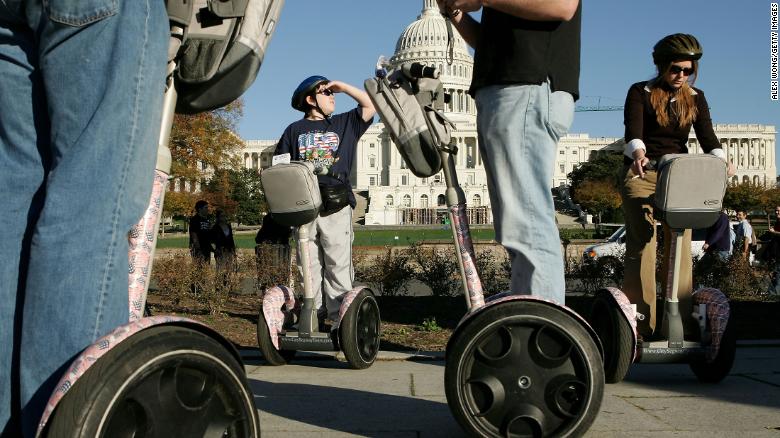














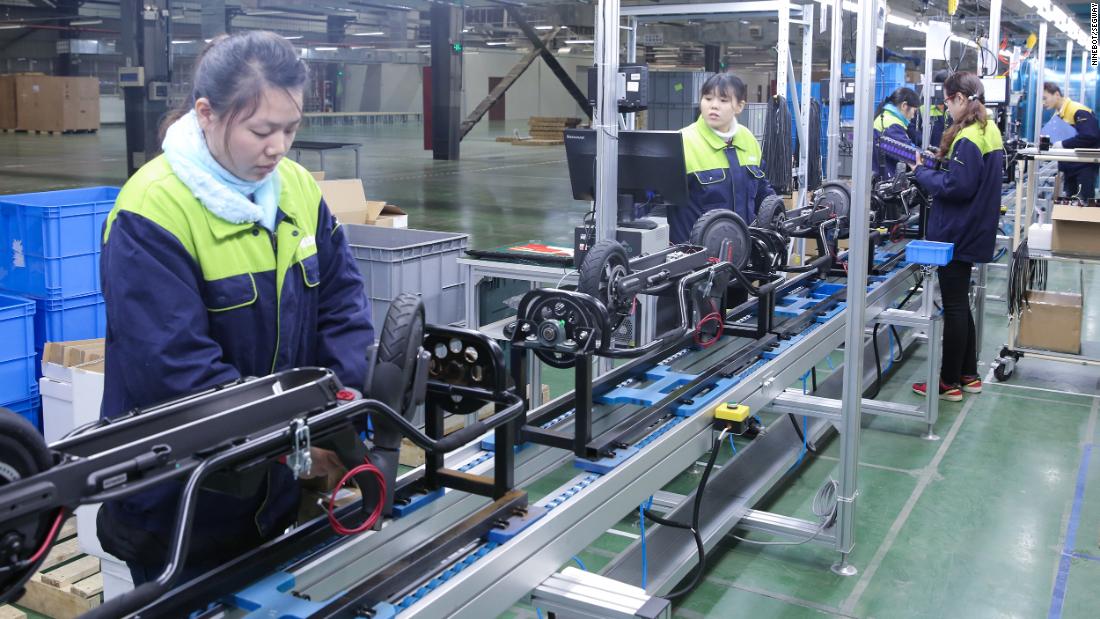
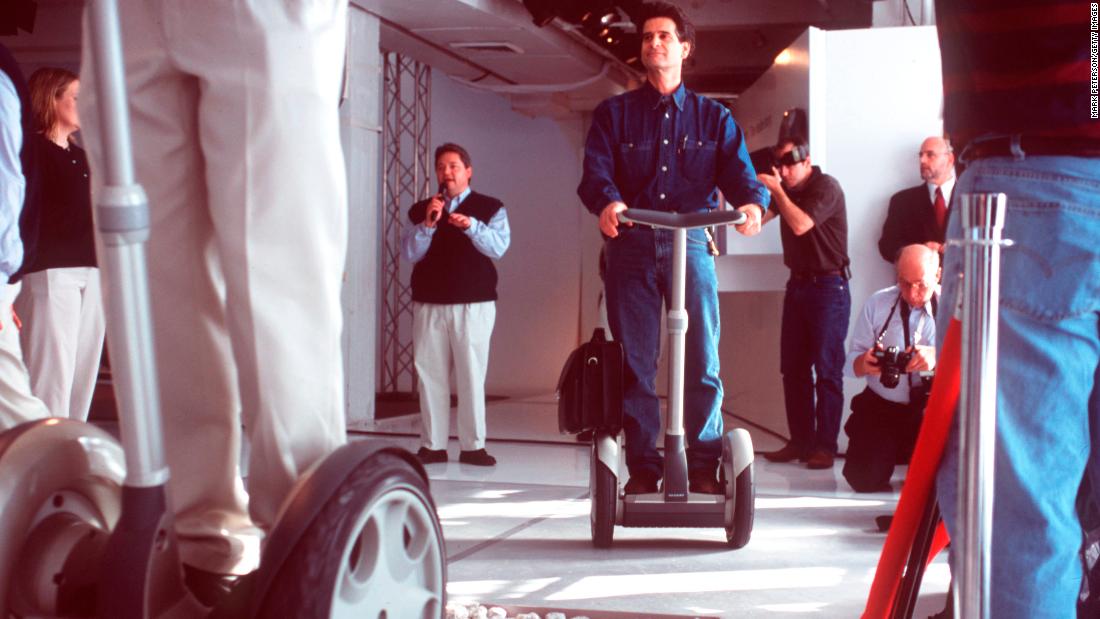
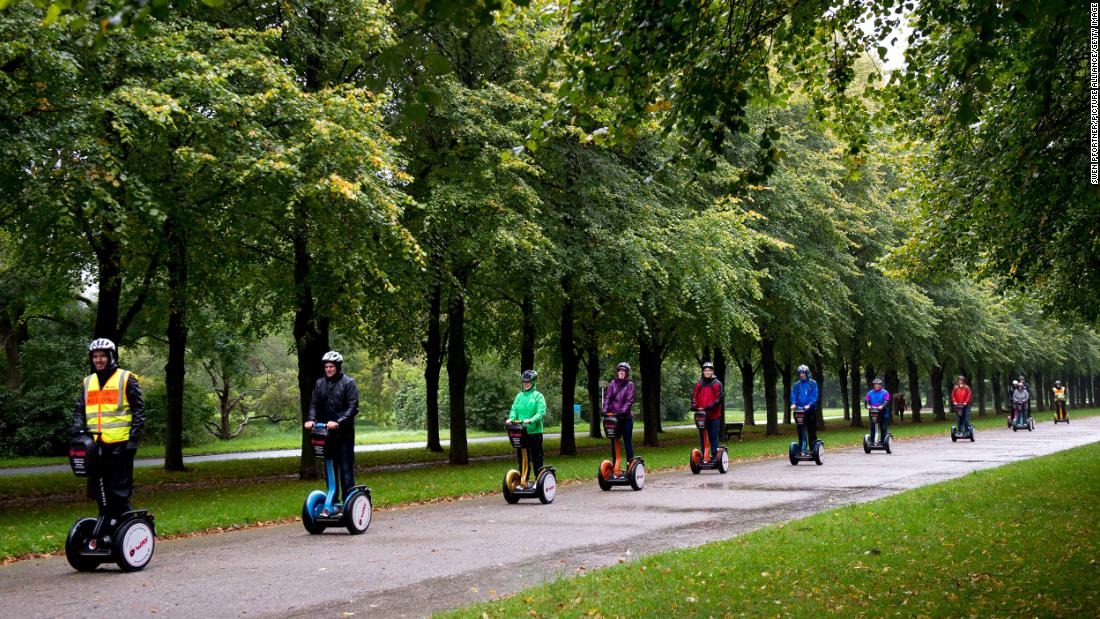
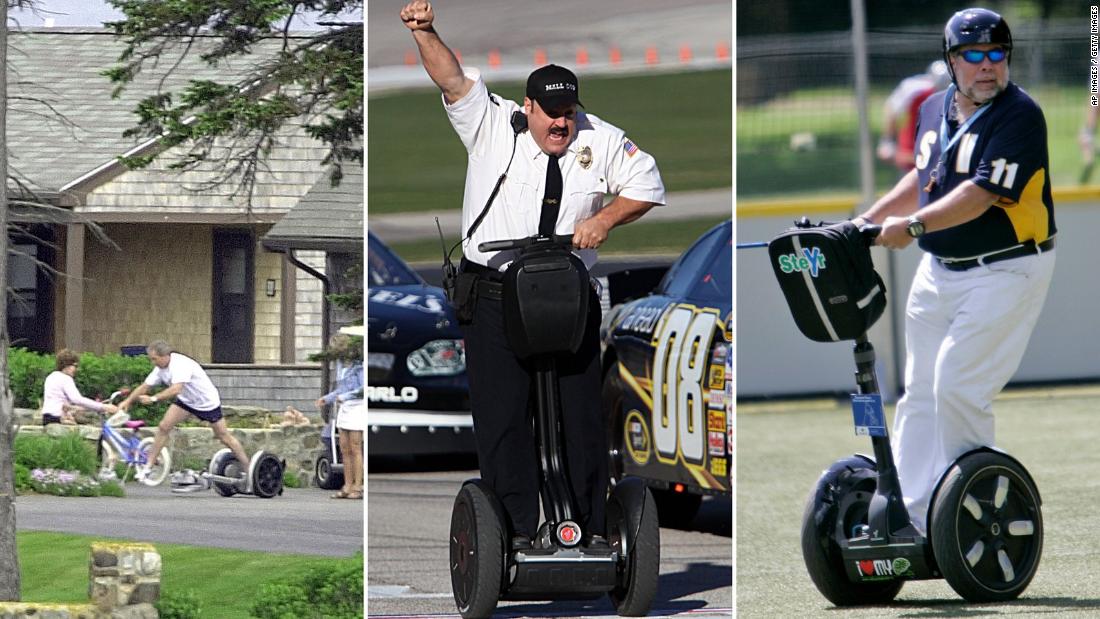
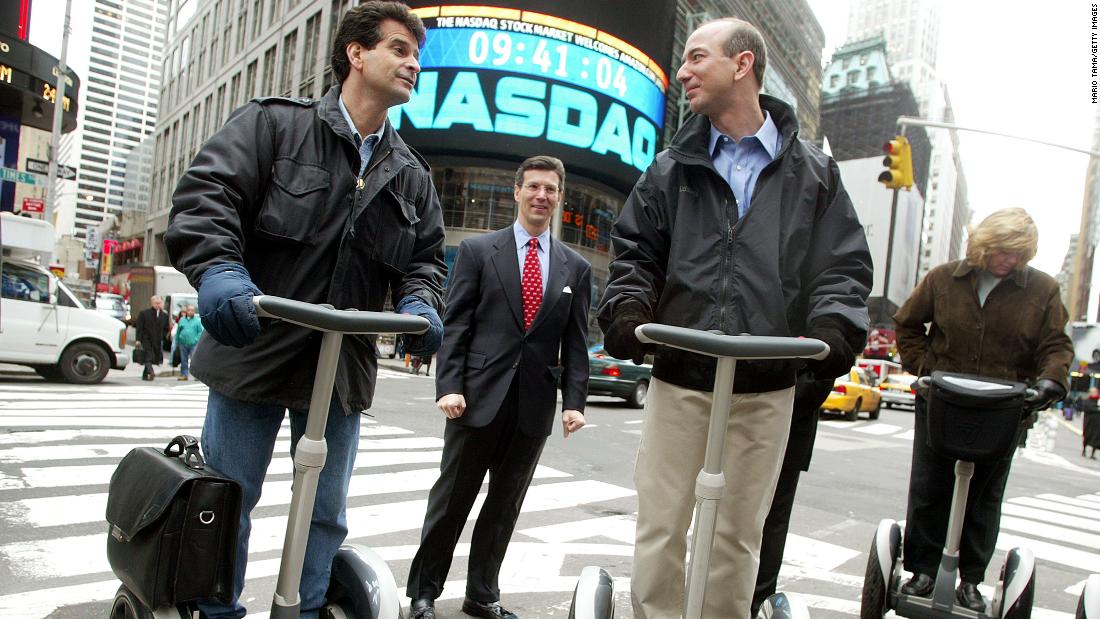
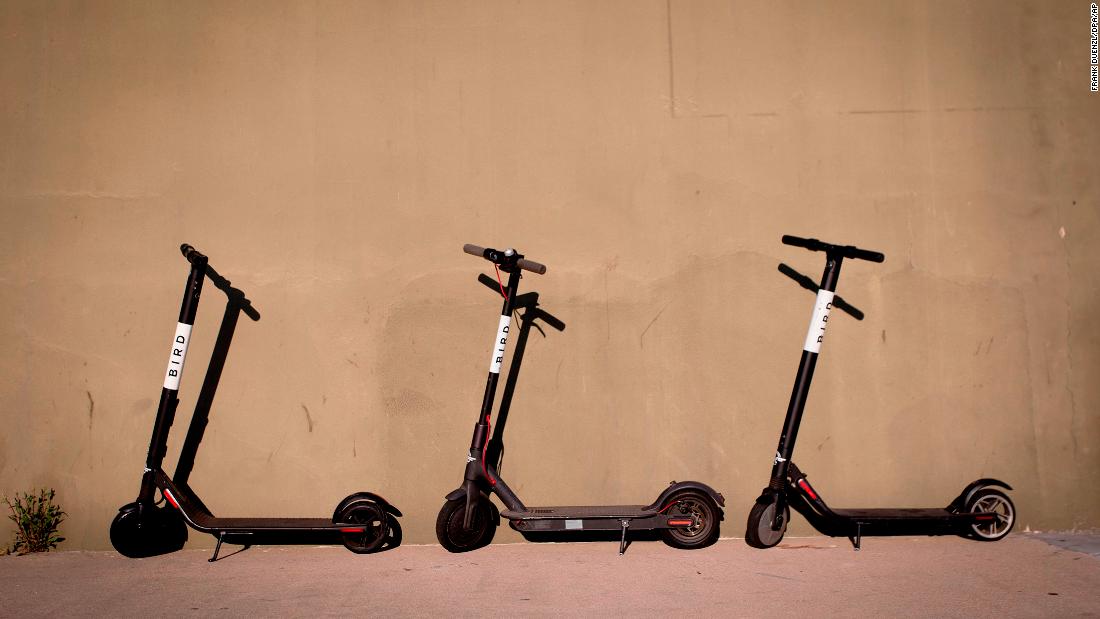
No comments:
Post a Comment